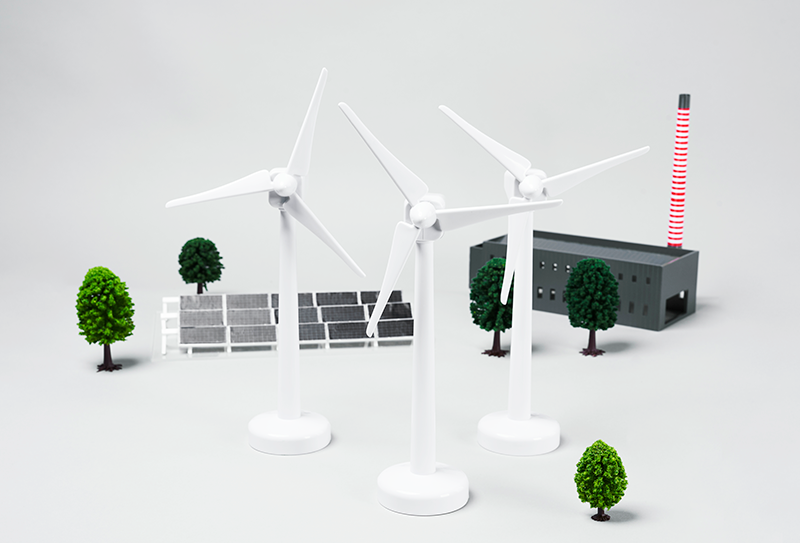In the pursuit of achieving net-zero emissions by 2050, renewable energy sources have emerged as crucial components. Among these, green hydrogen energy, derived from renewable sources like wind and solar power, has taken center stage.
David Hall, VP of Power Systems at Schneider Electric UK & Ireland, emphasizes the significance of green hydrogen energy and explains why it has garnered more attention now than ever before.
Green hydrogen is recognized as a clean and viable solution by the UK Government. Recently, the government doubled the national targets for low carbon hydrogen production capacity to 10 GW by 2030, aiming for its widespread utilization across various sectors of the economy.
This surge in green hydrogen production could potentially match the annual gas consumption of over 3 million UK households. As a result, the UK holds substantial potential to lead the global hydrogen economy, projected to be worth around £2 trillion by 2050.
Understanding Different Types of Hydrogen Energy
Green hydrogen is a transformative energy form that converts renewable energy into a gas suitable for storage, transportation, and use in industries, transportation, heating, and electricity generation. Importantly, the production and utilization of green hydrogen yield only oxygen and water as by-products, making it exceptionally clean.
In contrast, grey hydrogen energy originates mainly from natural gas, leading to considerable carbon emissions. Blue hydrogen involves capturing and storing carbon emissions. Yellow hydrogen is produced through electrolysis from the grid, which can still involve fossil fuel generation and may not be the most efficient method.
Challenges on the Path to Hydrogen Energy Adoption
Despite its potential, green hydrogen energy faces challenges that need to be addressed. The UK Government’s Hydrogen Strategy outlines some of these hurdles, including the high cost of hydrogen compared to existing high carbon fuels, technological uncertainties, and policy and regulatory ambiguity as hydrogen is still a developing energy policy.
Public perception regarding hydrogen’s explosive properties and its safety as a fuel also needs transformation.
Furthermore, the historical industrial use of hydrogen derived from natural gas or coal has contributed to climate change. Today, the success of hydrogen energy aligns closely with renewable energy, natural gas, and carbon capture and storage (CCS) technology.
The Transition to Green Hydrogen
While green hydrogen remains a primary goal for the energy sector, the UK Government believes that the sector’s scaling up necessitates carbon-free hydrogen derived from fossil fuels combined with CCS.
Amid the need for affordable renewable power generation and securing its demand, the UK holds a unique position to address these challenges and make a seamless transition to green hydrogen.
The UK’s competitive edge stems from its geographical advantage, well-developed infrastructure, and extensive expertise in gas production, distribution, storage, and use.
Moreover, the UK possesses favorable geological conditions for large-scale hydrogen storage, making long-term seasonal storage a feasible option. The country’s ability to store excess renewable electricity generated from windy and sunny days for use during higher-demand periods, such as winter, could contribute to the success of green hydrogen adoption.
Technological Innovation Driving Green Hydrogen Energy
Efficient green hydrogen production requires technological innovation. New digital technologies play a crucial role in resolving challenges associated with large-scale green hydrogen production.
Dynamic process simulation models and digital twins expedite project conceptualization by aiding in selecting the appropriate electrolyzer type and size and the required renewable farm. These models simulate various parameters, enabling comprehensive analysis of expected variations during facility operations. A complete model considers storage and downstream industrial usage based on project goals.
Engineering tools that incorporate digital twin technology streamline processes across stakeholders and facilitate interaction with external parties. This technology covers the entire lifecycle of hydrogen production facilities, optimizing design, operation, and maintenance.
Incorporating green hydrogen energy could accelerate the transition to renewable energy and ultimately contribute to achieving net-zero emissions. Major energy providers are exploring green hydrogen as a means of decarbonizing, favoring natural gas over oil and coal.
Capitalizing on sustainable energy sources could drive demand for green hydrogen energy, positioning it as a viable alternative in the evolving energy landscape.
The Time to Embrace Green Hydrogen Is Now.


